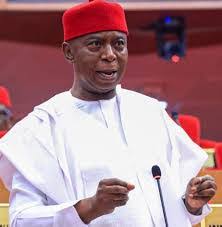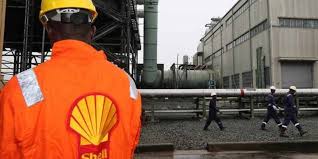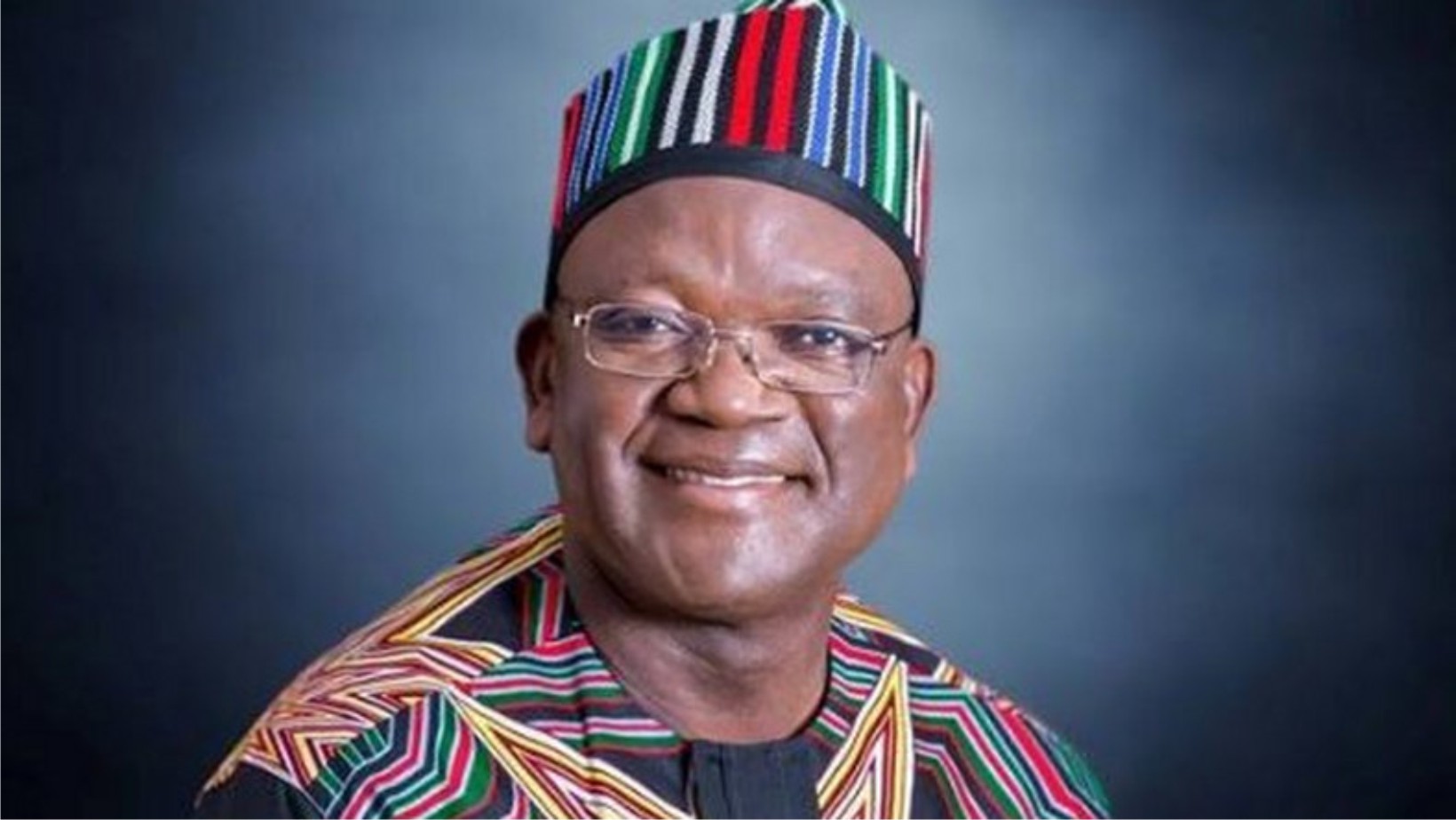Oil & Energy
Implementation Of Committee Report On Niger Delta: Myth Or Reality?
Being a paper presented by Barrister Ledum Mitee, MOSOP President & Chair of the Defunct Technical Committee on the Niger Delta, at the Port Harcourt International Oil and Gas Conference, last week.
The Technical Committee and its Work
The Niger Delta Technical Committee was inaugurated at a period of hightened tension exacerbated by the frustrations and burning sense of injustice that is pervading the region which found extreme expression in attacks on oil installations, kidnapping and assassinations, the nation was at its tenterhooks.
Against the backdrop of a rich history of disturbing economic shortfalls and broken promises intertwined with devastating environmental damage and conflict, there were hightened expectations of the people as many saw the Committee as the last bus stop in the realisation of the resolutions of the problems of the region. Many, however, viewed the work of the Committee with great skepticism not because of doubts on the ability of the Committee to accomplish its assigned task creditably but whether the report of the Committee will not join its predecessors on the shelf?
Perhaps to reassure Nigerians, President Goodluck Jonathan, then as Vice President, in his inaugural address in urging members to make “suggestions for Government’s necessary and urgent action”, went on to declare:” On behalf of the Government, I want to assure you that your recommendations will not be treated with levity.” In receiving the Report of the Committee on the 1st of December, 2008, the late President Yar ‘ Adua similarly assured that government would study the report urgently and implement those aspects that it believes would lead to the permanent resolution of the problems of the Niger Delta region.
These were the circumstances that the Committee set down to work, albeit under considerable challenging circumstances, but with full realisation of the expectations of the nation and the international community.
Some Key Recommendations
In making the recommendations, the Committee proceeded from the premise that whilst the problems of the Niger Delta may be homogenous and exhibit a certain measure of similarity, suggesting the same origin, the region is far from homogenous. Thus, while some of the recommendations are generally applicable, others are targetted at unique challenges of states and communities that constitute the region. The Committee also recognised that the importance of the region to the country makes the solution to its problems a national issue with international implications, and as such, its solutions ought to be addressed as a matter of national interest.
Furthermore, The Committee noted that past and so far existing efforts to redress the Niger Delta crisis have suffered from want of political will. This has resulted in complete lack of trust necessitating that any genuine attempt at redressing the problem has to be dramatic and seen to be sustained and well resourced.
For these reasons, it is suggested that its key recommendations must not only be implemented but so implemented as a package and not in isolation. The Committee therefore boxed certain recommendations into a Compact with stakeholders that will commit to support critical short-term changes that are necessary for stemming the decline of the region into blown conflict zone. The short term Compact which seeks to deliver on visible, measurable outputs which should produce material gains within an 18 month period was to be guided by the principle that the three tiers of government and other stakeholders report on progress in implementation every three months.
The key recommendations include:
Funding Infrastructural Development
The Committee recommended the establishment of a Special Niger Delta (Infrastructural) Intervention Fund for the needed urgent massive infrastructural intervention in the region. The Fund should receive contributions from oil companies, Federal and state governments through the Excess crude Account, Foreign Exchange Reserve as well .as international· donor Agencies, international . pledges and grants and private sector sources.
Communities Stakes in Oil Activities
In order to facilitate a situation where communities will and voluntarily protect the assets and operations of oil companies, it was recommended that a framework that allows them to share in the wealth available to each community has to be established. The establishment of community Trust Funds will pool together resources from compensations, royalties, rents and entitlements directly accruing from relations with oil and gas companies. There is thus the need to institutionalise by law, a Community Trust Fund scheme for oil-producing communities which will allow registered community associations and local groups the opportunity to participate in deciding how the funds are used.
Similarly, it was recommended that power and water supplies from the oil flow stations should be extended to communities within 15 kilometres radius of such stations to ensure that the communities have requisite stakes in the continued operation of such flow stations.
Perhaps it is relevant to add here that the current Petroleum Reform Bill provides an excellent opportunity to work out a framework for taking on board the Committee’s recommendation on the payment of compensation and rentals to oil bearing land owners at full economic rates and for oil operators to pay royalties into the community Trust Funds of not less than $2 per barrel.
It was similarly recommended that by last year, 2010, appropriate regulations should be established to compel oil companies to have insurance bonds against environmental pollution, strengthen independent regulation of oil pollution and work towards an effective EIA mechanism. It was also recommended that enforcement of critical environmental laws be made a national priority whilst fraudulent environmental cleanups be exposed and prosecuted and gas flaring should cease by December 3151 2008.
Increased Revenue
Increase allocation accruing from oil and gas revenues to the Niger Delta states to 25% within a framework in which the additional funds are dedicated largely to new infrastructure and sustainable development of the region.
Infrastructure
It was recommended, amongst others, that the East-West Road dualisation from Calabar to Lagos with at least one link road per state to the coastline should be fast-tracked to ensure completion by 2010 as well as the commencement of both a coastal road and railway from Calabar to Lagos.
Also recommended was that the federal government should provide immediate funding for full takeoff of the Federal University of Petroleum Resources in Effurun, Delta State and that PTDF be refocused and re-directed to provide scholarship at all levels to make at least 50% of its beneficiaries to be persons from the Niger Delta.
Disarmament, Demobilisation and Reintegration (DDR)
The Committee recommended a DDR process that should begin with some confidence building measures on all sides which include ceasefire on all sides, pull back of troops, credible conditions for amnesty and the setting up of a DDR Commission. It is worthy to note that whilst the amnesty proposed by the Committee was a component of an entire DDR process, the current amnesty programme appears to be a stand-alone concept with no attempt to address the root causes of the problems that bred armed militancy in the first place.
Since the announcement of the amnesty for Militants, there has been some felt concern which stems from the fact that in so far as the amnesty focused almost exclusively on militancy without any pretence to reflect on the underlying concerns of the people of the region, it certainly would not bring about the desired sustainable peace in the Niger Delta. In so far as the policy would appear to be merely designed to appease militant agitations, it was like giving paracetamol to a clinically ill patient. The policy which is supposedly backed by a nasty budget, which is doubtful if it reflects on the militants themselves, appears not to be well thought out as there were no consultations with critical stakeholders and there was no definite and sustainable post disarmament plans. More importantly, it does appear that it makes the false assumption that ‘success’ of disarmament of a section of armed miltants without any serious efforts at addressing the injustices afflicting the region would by itself translate to peace or the end of militant agitation in the Niger Delta.
There is the crying need therefore to re-appraise the current amnesty offer to a credible negotiated Disarmament, Decommissioning and Reintegration (DDR) programme. There is the need therefore to structure a process that mops up the still available large amounts of small arms and ammunition and put them or most of them beyond the reach of militants and would-be militants. The process would have to be designed to ensure that where disarmament terminates, demobilisation begins and where demobilisation ends, reintegration commences.
Again, it need be noted that in the committee’s view, although there are international best practices on the key elements of implementation of DDR, the natural starting point should be the setting up of a DDR National Commission or Implementation Committee which should draw membership from amongst others, religious leaders, the civil society, government, ideally a UN observer or technical expert for the international community’s buy-in etc. It would be important that the composition should be such as to captures the confidence of the critical stakeholders.
Youth Employment
As international best practices suggest that it might be counter productive to target any empowerment programme for only the ex-militants in order not to give the impression that only bad behaviours can attract reward, the Technical Committee recommended the establishment of a direct labour Youth Employment Scheme (YES) in conjunction with the States and Local Governments that will employ at least 2,000 youths in community work in each of the local Governments in the Niger delta.
Security Reform
It also need be emphasised that any sustainable peace process in the Niger Delta must take into consideration the Committee’s recommendation to:
Improve the operational integrity of security forces in the region to a level that assures communities and business organisations of safety without harassment and disruption. This will involve definite steps to eliminate all forms of abuses by security forces and institute proper programmes or reorientation, demilitarisation, retraining and accountability of all security operatives.
Concluding Remarks
In the light of the foregoing, it does not require rocket science or the special expertise of someone who served on the Committee to decipher how far the recommendations of the Committee have been implemented or not. Whilst we must acknowledge the fact that the implementation of the amnesty programme have greatly reduced the hostilities in the region, to the extent that oil production has increased by over 100% over the figures of the pre-amnesty era, but the fact that the increased revenue from oil has not reflected in improved livelihoods or facilities available to the oil bearing communities of the region should be of worrying concern.
As members of the Technical Committee stressed at a one- day meeting convened on November 5th 2010, to consider the implementation of the Report, “a selective and ad-hoc implementation of the recommendations undermines the sense in which the Technical Committee on the Niger Delta and indeed the Region envisaged the pursuit of their peace, development, security and stability.”
Ledum Mitee
Oil & Energy
Nigeria Loses More Crude Oil Than Some OPEC Members – Nwoko

Nigeria’s losses due to crude oil theft has been said to be more significant than those of some other members of the Organisation of Petroleum Exporting Countries(OPEC).
The Chairman, Senate Ad- hoc Committee on Crude Oil Theft, Senator Ned Nwoko, made this known in an interview with newsmen in Abuja.
Nwoko noted with dismay the detrimental impact of the issue, which, he said include economic damage, environmental destruction, and its impact on host communities.
According to him, the theft was not only weakening the Naira, but also depriving the nation of vital revenue needed for infrastructure, healthcare, education and social development.
The Senator representing Delta North Senatorial District described the scale of the theft as staggering, with reports indicating losses of over 200,000 barrels per day.
Nwoko disclosed that the ad hoc committee on Crude Oil Theft, which he chairs, recently had a two-day public hearing on the rampant theft of crude oil through illegal bunkering, pipeline vandalism, and the systemic gaps in the regulation and surveillance of the nation’s petroleum resources.
According to him, the public hearing was a pivotal step in addressing one of the most pressing challenges facing the nation.
‘’Nigeria loses billions of dollars annually to crude oil theft. This is severely undermining our economy, weakening the Naira and depriving the nation of vital revenue needed for infrastructure, healthcare, education, and social development.
‘’The scale of this theft is staggering, with reports indicating losses of over 200,000 barrels per day more than some OPEC member nations produce.
‘’This criminal enterprise fuels corruption, funds illegal activities and devastates our environment through spills and pollution.
‘’The public hearing was not just another talk shop; it was a decisive platform to uncover the root causes of crude oil theft, bunkering and pipeline vandalism.
‘’It was a platform to evaluate the effectiveness of existing surveillance, monitoring, and enforcement mechanisms; Identify regulatory and legislative gaps that enable these crimes to thrive.
‘’It was also to engage stakeholders, security agencies, host communities, oil companies, regulators, and experts to proffer actionable solutions; and strengthen legal frameworks to ensure stricter penalties and more efficient prosecution of offenders”, he said.
Nwoko noted that Nigeria’s survival depended
Oil & Energy
Tap Into Offshore Oil, Gas Opportunities, SNEPCO Urges Companies

Shell Nigeria Exploration and Production Company Ltd. (SNEPCo) has called on Nigerian companies to position themselves strategically to take full advantage of the growing opportunities in upcoming offshore and shallow water oil and gas projects.
The Managing Director, SNEPCO, Ronald Adams, made the call at the 5th Nigerian Oil and Gas Opportunity Fair (NOGOF) Conference, held in Yenagoa, Bayelsa State, last Thursday.
Adams highlighted the major projects, including Bonga Southwest Aparo, Bonga North, and the Bonga Main Life Extension, as key areas where Nigerian businesses can grow their capacity and increase their involvement.
“Shell Nigeria Exploration and Production Company Ltd. (SNEPCo) says Nigerian companies have a lot to benefit if they are prepared to take advantage of more opportunities in its offshore and shallow water oil and gas projects.
“Projects such as Bonga Southwest Aparo, Bonga North and Bonga Main Life Extension could grow Nigerian businesses and improve their expertise if they applied themselves seriously to executing higher value contracts”, Adams stated.
Adams noted that SNEPCo pioneered Nigeria’s deepwater oil exploration with the Bonga development and has since played a key role in growing local industry capacity.
He emphasized that Nigerian businesses could expand in key areas like logistics, drilling, and the construction of vital equipment such as subsea systems, mooring units, and gas processing facilities.
The SNEPCO boss explained that since production began at the Bonga field in 2005, SNEPCo has worked closely with Nigerian contractors to build systems and develop a skilled workforce capable of delivering projects safely, on time, and within budget both in Nigeria and across West Africa.
According to him, this long-term support has enabled local firms to take on key roles in managing the Bonga Floating, Production, Storage and Offloading (FPSO) vessel, which reached a major milestone by producing its one-billion barrel of oil on February 3, 2023.
Oil & Energy
Administrator Assures Community Of Improved Power Supply

The Emohua Local Government Area Administrator, Franklin Ajinwo, has pledged to improve electricity distribution in Oduoha Ogbakiri and its environs.
Ajinwo made the pledge recently while playing host in a courtesy visit to the Oduoha Ogbakiri Wezina Council of Chiefs, in his office in Rumuakunde.
He stated that arrangements are underway to enhance available power, reduce frequent outages, and promote steady electricity supply.
The move, he said, was aimed at boosting small and medium-scale businesses in the area.
“The essence of power is not just to have light at night. It’s for those who can use it to enhance their businesses”, he said.
The Administrator, who commended the peaceful nature of Ogbakiri people, urged the Chiefs to continue in promoting peace and stability, saying “meaningful development can only thrive in a peaceful environment”.
He also charged the Chiefs to protect existing infrastructure while promising to address the challenges faced by the community.
Earlier, the Oduoha Ogbakiri Wezina Council of Chiefs, led by HRH Eze Goodluck Mekwa Eleni Ekenta XV, expressed gratitude to the Administrator over his appointment and pledged their support to his administration.
The chiefs highlighted challenges facing the community to include incessant power outage, need for new transformers, and the completion of Community Secondary School, Oduoha.
The visit underscored the community’s expectations from the LGA administration.
With Ajinwo’s assurance of enhancing electricity distribution and promoting development, the people of Oduoha Ogbakiri said they look forward to a brighter future.
By: King Onunwor
-
Rivers4 days ago
HOS Tasks Rural Dwellers On RAAMP … As Project Sensitization Team Visit Degema, AKULGA
-

 Politics4 days ago
Politics4 days agoTinubu’s Contribution To Buhari’s Presidency Marginal – Ex-SGF
-
Opinion4 days ago
Is Nigeria Democratic Nation?
-

 News4 days ago
News4 days agoRSG Tasks Rural Dwellers On RAAMP …As Sensitization Team Visits Akulga, Degema, Three Others
-

 News4 days ago
News4 days ago2027: I Stand With Southern Presidency -Ortom
-
Politics4 days ago
Lagos LG Polls: Police Restrict Movement, Tightens Security
-

 Politics4 days ago
Politics4 days agoReps Constitution Review Committee Holds Zonal Hearing For Rivers, C’River, Akwa Ibom In Calabar
-
Opinion4 days ago
Checking Herdsmen Rampage

